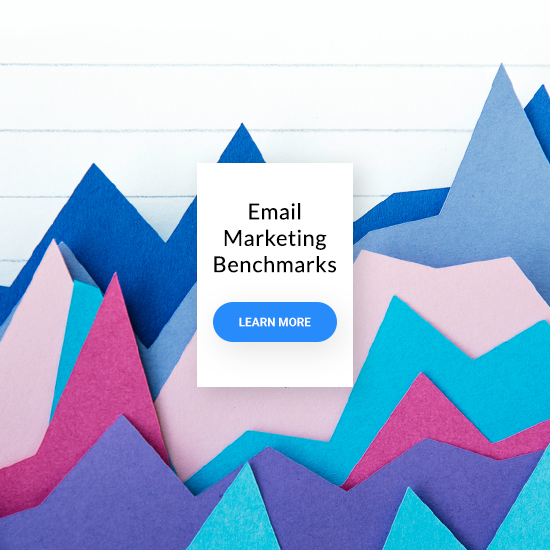Set smart campaign goals (in line with your email marketing strategy)
I bet you’ve heard that goals are SMART when they are specific, measurable, achievable, relevant, and time-bound. For best results, set smart goals in your email marketing strategy, e.g.:
- Get an average open rate of 23% by the end of the year
- Increase click-through rates by 15% in 3 months
- Improve conversion by 10% in 6 months
- Retrieve 20% of abandoned carts
- Sell $200 worth of products through this campaign
Tip: You can use our original research to benchmark your campaign results against the industry average and use this guide to learn more about key email marketing metrics and what they mean.
Determine the calls-to-action (CTAs)
Start with answering the most important question: what do you want your subscribers to do as a result of this campaign? The answer to this question will clarify the business objective and set directions for the campaign.
It will certainly help you create the best calls-to-action for your emails, e.g.:
- View offer
- Read more
- Find a store
- Shop now
- Shop [product]
Tip: Make your call to action copy as clear as possible and use contrasting colors to make sure it stands out against the email. Follow these email design best practices to ensure your campaigns perform well.

Choose an email segment
I hope you are collecting information about your contacts and dividing your contact list into segments – groups of contacts sharing common characteristics. Segmentation allows you to target your campaigns and reach the right people with the right content.
Here are a few examples of segments based on shopping behavior:
- Deal seekers
- Frequent buyers
- Cart abandoners
- Seasonal shoppers
- Impulsive customers
Tip: Use your subscription form to collect actionable data like gender, city, etc. Learn more about email segmentation and the most popular ways of dividing your audience.
Prepare your email templates
You already know your calls to action. Now, you need to choose the right email template, customize it to reflect your brand identity, and craft the copy to convey the message.
Come up with a compelling subject line and a preheader that will encourage your contacts to open the email. Here are a few examples of nicely composed messages:
Gmail:

Mail:

Tip: Your subscribers see the sender, subject line, and preheader before they open the email. Plan them out carefully because they can massively impact your open rates.
Here’s an example of an email with a clear call to action:

Create a marketing automation workflow
If your campaign consists of several emails, arrange them to create a logical communication flow. Use conditions, actions, and filters to plan a perfect workflow that will trigger your emails automatically.
Tip: Start with a simple workflow e.g., welcome email to anyone who subscribes to your list. You can add new elements as you go. Check out this guide to learn more about how marketing automation works.

Test and optimize
Track critical data to see if you reach your goals. Track conversion and revenue to measure your email marketing ROI. Each successful campaign or money-making workflow is a business case for more budget.
Tip: Your list size and click-through rates are the right metrics to start with. The bigger your contact list and the higher the click-through rate, the higher the revenue.
As you can see, email marketing is based on very simple principles. Good luck with planning your first email marketing campaign!

